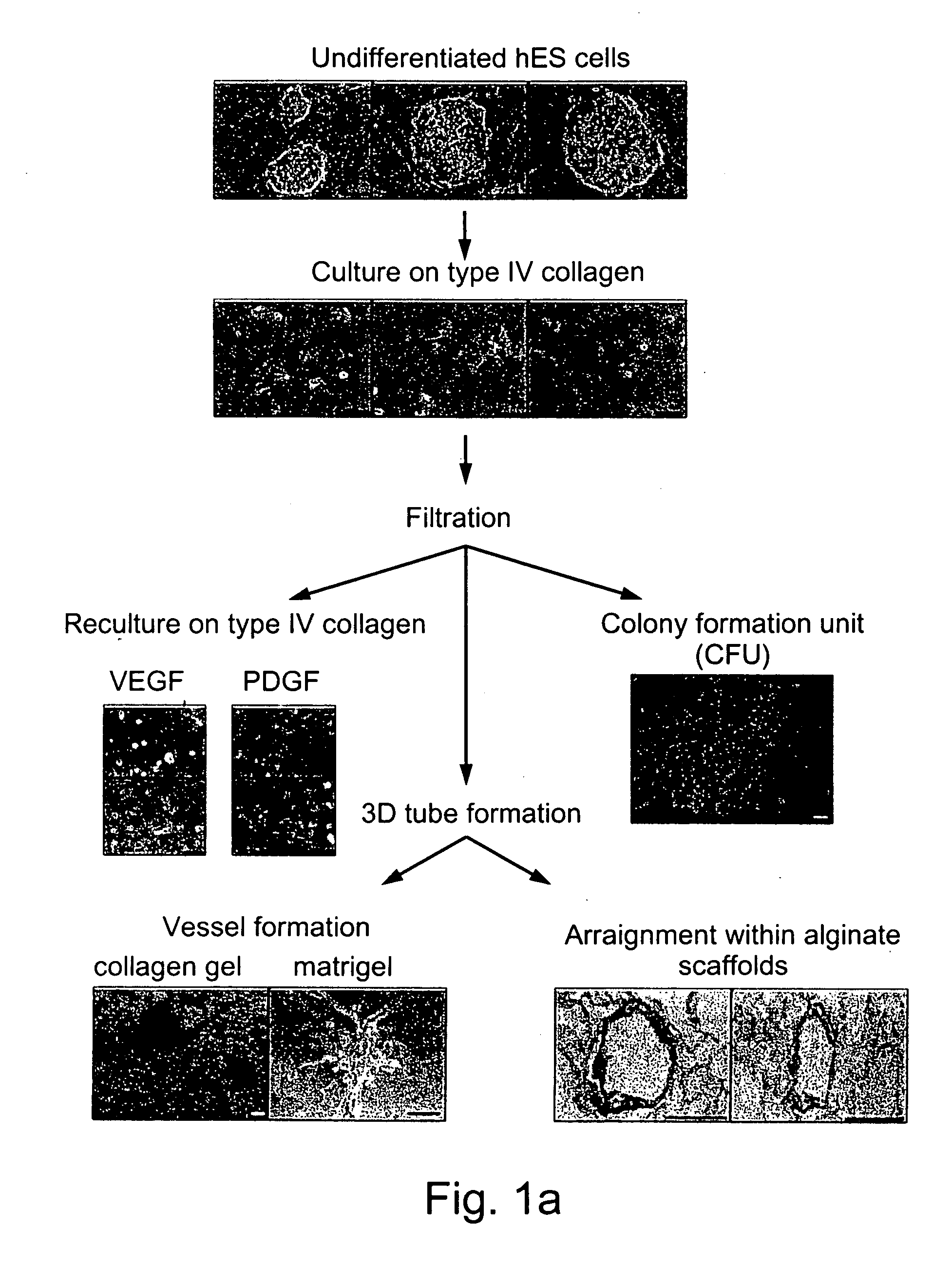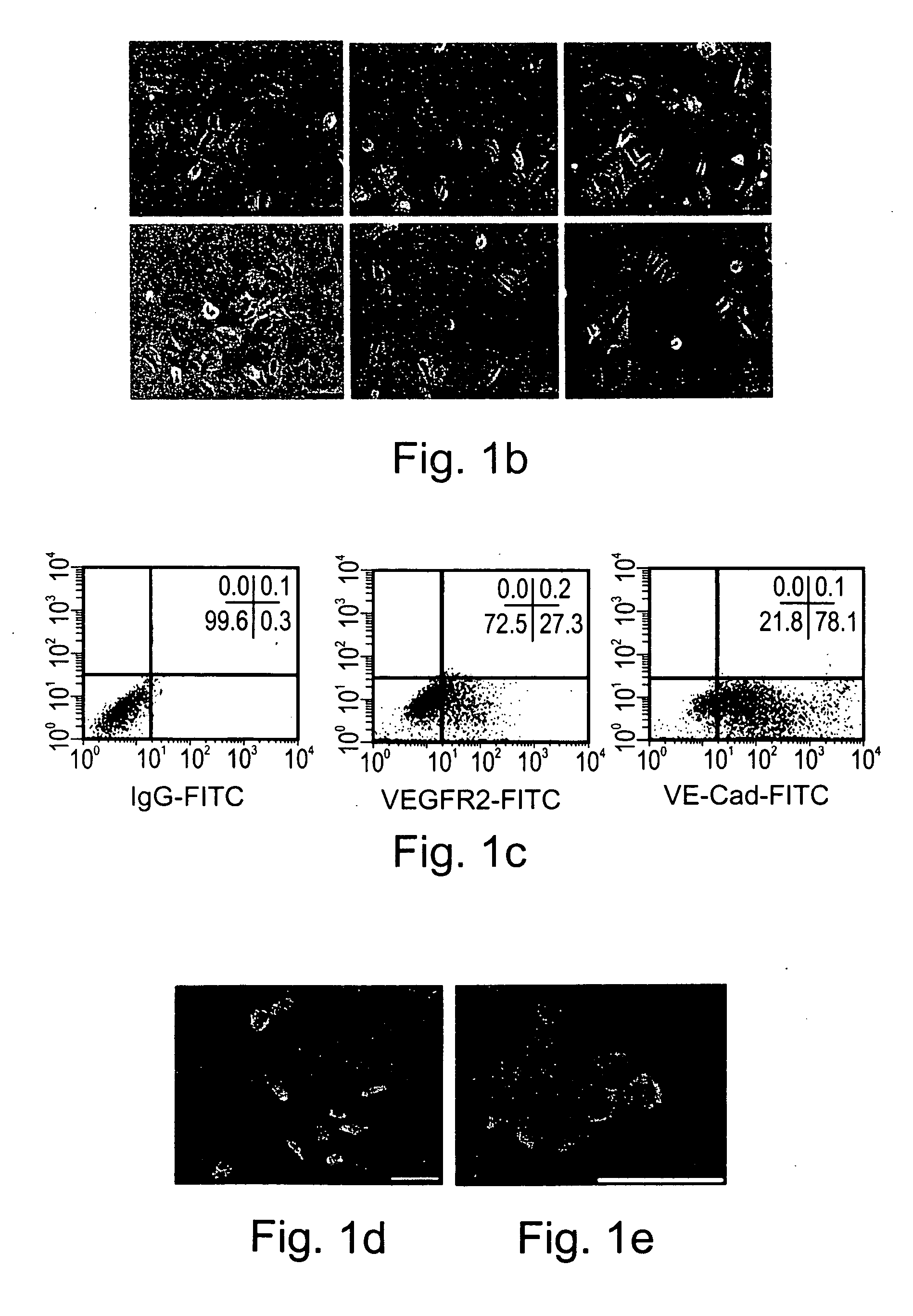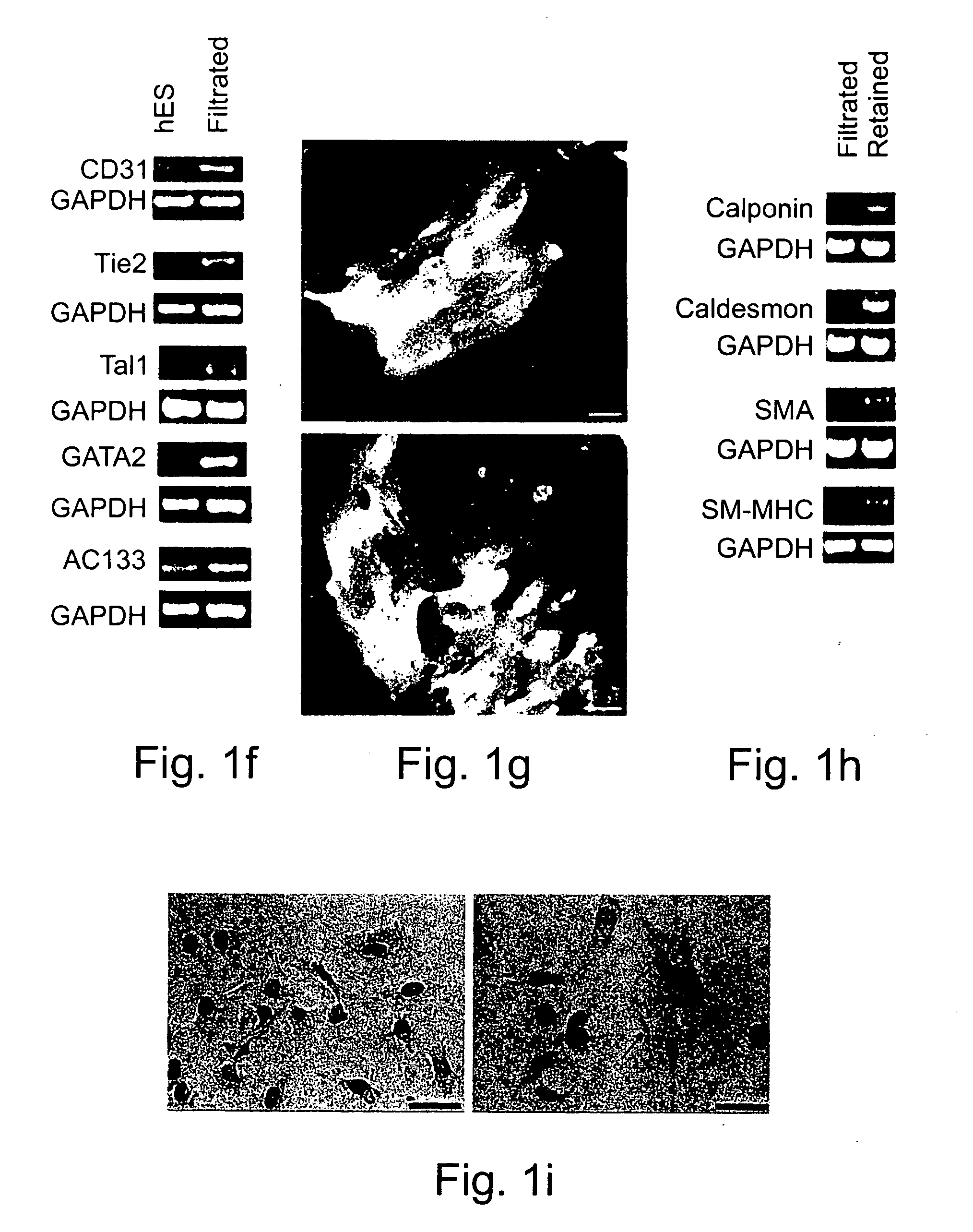Novel methods for the in-vitro identification, isolation and differentiation of vasculogenic progenitor cells
a vasculogenic progenitor cell and in-vitro identification technology, applied in the direction of biocide, plant growth regulator, biochemistry apparatus and processes, etc., can solve the problems of inability to directly extrapolate from mouse to human ec system, inconvenient for many clinical applications, and difficult to maintain embryonic stem cells in cultur
- Summary
- Abstract
- Description
- Claims
- Application Information
AI Technical Summary
Benefits of technology
Problems solved by technology
Method used
Image
Examples
example 1
Isolation and Enrichment of Human Vasculogenic Progenitor Cells from Human Stem Cells
[0189] Despite the overwhelming importance of human stem cell technology to research and medicine, application of discoveries made in research with non-human species to human stem cells has been painstakingly difficult, requiring great ingenuity and much effort. While murine embryonic stem cell (mES) lines, for example, retain their pluripotency in culture, and may be predictably manipulated to differentiate in vitro into cells of mesodermal, endodermal and ectodermal lineage, in vitro differentiation in human and other primate ES cell lines has been characterized by inconsistency, disorganization, and lack of synchrony, obviating successful in vitro tissue organization (see, for example, Thompson, et al Curr Top Dev Biol 1998; 38:133-165). In pursuing the isolation of vasculogenic progenitor cell from human embryonic stem cells, initial human ES mesodermal differentiation was attempted in a novel ...
example 2
In Vitro Induction of Endothelial, Smooth Muscle and Hematopoietic Cell Differentiation of Human Vasculogenic Progenitor Cells
[0196] In order to study the differentiation potential of the vasculogenic progenitor cells, cells were recultured on type IV collagen coated dishes, at a lower cell seeding concentration (2.5×104 cells / cm2). Smooth muscle cell differentiation was induced by adding platelet-derived growth factor BB (hPDGF-BB), which has been found to induce SMC differentiation in murine (mES), but not human stem cells (Gittenberger-de Groot A. C et al PNAS 2000;97: 11307). After 10-12 days of culture both spindle-like shaped and epithelioid phenotype cells were detected in the culture, along with a concomitant induction of expression smooth muscle cell markers. RT-PCR analysis detected upregulation of specific smooth muscle markers such as smooth muscle α-actin (SMA), smooth muscle myosin heavy chain (SM-MHC), calponin, SM22, and caldesmon (FIG. 2A, v-SMC), notably undetecta...
example 3
In-Vitro Vasculogenesis and Blood Cell Formation by ESH Cells
[0198] Crucial events characteristic of vasculogenesis have been induced in vitro using murine embryonic stem cell-derived embryoid bodies (see, for example, Feraud O et al Lab Investig 2001;81: 1661-89), however efforts to emulate vasculogenic processes in vitro using human pluripotent stem cells have been largely unsuccessful. To study the in-vitro vascularization potential of human vasculogenic progenitor (ESH) cells we used two different 3-dimensional models: type I collagen gel and Matrigel, which have been used to promote 3D vessel-like formation from endothelial cells (Mardi J A and Pratt B M, B. M. J. Cell Biol. 1988; 106:1375; Kubota Y et al J Cell Biol 1988;107:1589).
[0199] Aggregation of the ESH cells, in the presence of hVEGF and HPDGF-BB supplemented differentiation medium, prior to seeding into type I collagen (FIG. 3A) or on Matrigel (FIG. 3B) clearly induces sprouting and tube-like structures associated w...
PUM
 Login to View More
Login to View More Abstract
Description
Claims
Application Information
 Login to View More
Login to View More - R&D
- Intellectual Property
- Life Sciences
- Materials
- Tech Scout
- Unparalleled Data Quality
- Higher Quality Content
- 60% Fewer Hallucinations
Browse by: Latest US Patents, China's latest patents, Technical Efficacy Thesaurus, Application Domain, Technology Topic, Popular Technical Reports.
© 2025 PatSnap. All rights reserved.Legal|Privacy policy|Modern Slavery Act Transparency Statement|Sitemap|About US| Contact US: help@patsnap.com



